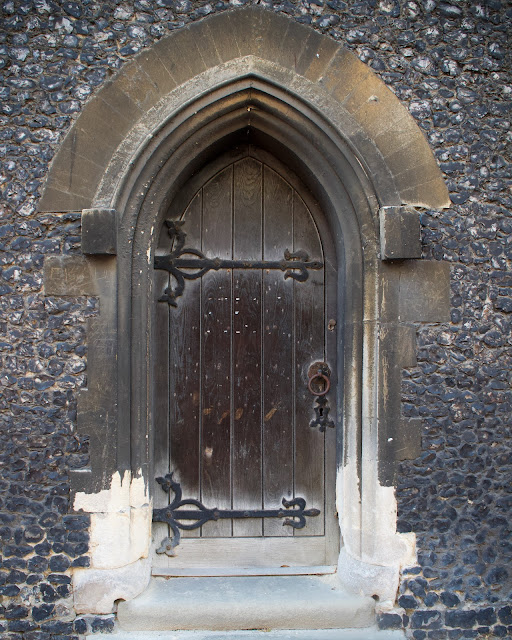Today, St Laurence's Church stands in Reading town centre where the market place and Friar Street join together, at the swerve of the road where the statue of Queen Victoria now stands. It's one of the town's best-known landmarks. But what is it's history?
The nineteenth-century historian Charles Kerry believed that St Laurence's was built on or near to the site of a much smaller Anglo-Saxon church that served the early Reading community. Exploring the site of the earlier structure, he speculates that it may have stood either where the church stands today or within today's abbey ruins. The theory is that when Henry I founded Reading Abbey in 1121 he had the old church demolished and St Laurence's built on the other side of the Forbury, once abbey-owned land.
The abbey soon became the spiritual and political centre of the town and Reading's population swiftly increased after the abbey's consecration by Archbishop of Canterbury, Thomas Beckett, in 1164. St Laurence was enlarged and altered to cope with this change. Now, there were not only Reading's residents in the church's parish that wished to attend services but visitors to the town too. In 1196 the south doorway of the nave, the piscina in the south wall and windows were added, the builders incorporating existing Norman fragments found in the existing structure.
By the Tudor period Reading was known as a regular location of parliament. Medieval kings had held parliaments at Reading Abbey since its foundation and even after its dissolution, remained a centre of royal business. All Tudor monarchs visited Reading, holding parliament within the abbey, or later, using it as a royal stopover while travelling throughout the south east. At the beginning of the reign of Henry VII a 'Robin Hood' May Day celebration was held at the Forbury, with the church playing a central part in the festivities. In 1498 a new bell, 'Harry', was added into the tower. The font was put in place in 1503-1504, and an organ existed in the church by 1505 but was replaced with a larger one in 1510. Church records from 1518-1521, during the reign of his son Henry VIII, show another set of works being undertaken with payments made to 'Myller the Joynor' for work within the church, as well as Harry Horthorne 'for timbre workmanshypp'. Other payments were made in 1520-1521 for masonry, fabrics and 'glass for the new windows'. New arches were constructed in 1522, and the roof of the north aisle was repaired in 1524-1525.
It's believed too that medieval and Tudor visitors to St Laurence would have seen statues of St Laurence and St Vincent on either side of the tower doorway as they shuffled through its wooden door for services. In 1883 Kerry saw the figures in the Vicarage garden, with St Laurence having 'the remains of a fringed purse on the left side, but the sustaining hand and arm are broken off.' The statue also showed decorations of a grape and vineleaf pattern 'with an undulating stem'. The statue of St. Vincent was more badly worn, said Kerry, and both statues' heads were destroyed.
Just next to the church was the market place, where traders would barter for the sale of their goods, including shoes, leather and clothwork. Further along, towards today's Broad Street, butchers and cheesemongers sold fresh produce from their shops. To cater for a growing population Reading also had a number of taverns and inns that provided food, drink and rest for courtiers, merchants and traders. The pillory, where criminal activity was punished, was placed between the church and the market place, its central location a guarantee that people would see offenders as they were going about their daily business, a deterrent to anyone considering committing similar offences. A churchwarden of St Laurence had his ears cut off after a day on the pillory for spreading rumours about the death of Edward VI.
St Laurence's Church would have been quite a sight to its visitors and parishioners in the medieval and Tudor age. Churchwardens' accounts show that it was decorated with images of saints, colourful cloths and hangings and was lit with candles, the flames glinting off the gold, including the crucifix that was placed on the altar. They also mention a series of wall paintings inside the church which were white-washed over during the Reformation of the mid-1500s, and a number of altars set up to worship different saints throughout the year. Henry VII, Katherine of Aragon, Anne Boleyn, Henry VIII and Edward VI all visited Reading and would have seen St Laurence's as they entered the abbey grounds. Philip of Spain and Mary I visited soon after their wedding, and made their way, guided by the mayor, to the abbey. Elizabeth I was known to worship inside St Laurence's, with accounts showing that parishioners decorated the inside with foliage and flowers before her visit. In later years St Laurence continued to be maintained and kept, and in 1881-1882 received restoration work, involving the pinnacles of the tower, windows, doorways and stonework at a cost of £2,000.
Since I've lived in Reading, St Laurence has been one of my favourite buildings, and I think it's one of the most evocative of the town. Visited by royalty, medieval entertainers, parishioners and travellers to the town, it is a key part of Reading's history.
Liked this? You might also like Walk in the Footsteps of the Tudors in Reading, and Medieval Treason: The Case of Thomas Kerver in 1444.
Source:
A History of the Municipal Church of St Laurence, Reading. Charles Kerry. Derby, 1883. via archive.org





















0 Comments